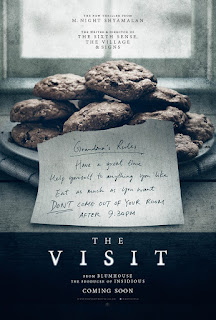A sun rises behind the miners, the halo of its light
suppressed by the blanket of clouds. Their spacesuits spew air through helmet
spouts, whale-like. They are in an environment they don’t belong in. Despite the
warning signs, they’ll soon find something deep and dark in the ship that lies
ahead on the horizon. This is how Ridley Scott’s Alien leads up to the events that will set in motion the rest of
the movie, one of the greatest of all horrors.
The crew of the Nostromo receives a distress signal from an
unknown planet. According to protocol, they must investigate. When one of the
crew members returns with a creature attached to his face, the crew panics and
leaves, not realizing they’ve given the Xenomorph, the most vicious animal in
the galaxy, the perfect arena to hunt them in. It had been years since I had
seen this movie and going in, expecting to be thrilled all over again, I found
an uncommonly intelligent sci-fi movie, one that deals with the themes of man
vs. technology, birth and rebirth, and survival at all costs.
What struck me at once was the wonderful production design.
The Nostromo is split into two distinct sections: the incredibly high tech,
clean, and sterile area with the master computer, and the dirty, dank,
cavernous hull. The hull is covered in scrap metal, spare parts, and chains.
The master computer room is filled with lights, panels, and screens. Both
represent a challenge to the crew onboard. As stated, one of the main themes of
this movie is man vs. technology, specifically technology that we have created
for ourselves. Despite being called “Mother” by the crew, the master computer
possess no sense of warmth or feeling, coldly responding with text to the
prompts of Dallas (Tom Skerritt) and Ripley (Sigourney Weaver). Ash, the
android on board, refuses to help pacify the alien, valuing its potential
weaponization over the crew (“Crew is expendable”). It rang very true to me as
we move forward into the future and continually create more and more technology
to help make our lives easier. The challenge of facing cold and unfeeling
technology leads directly into the idea that the crew is hard pressed to
effectively combat the alien, the most efficient and effective predator in the
known universe. Its lack of eyes, black exterior, and vicious attacks strike
fear into the heart of the crew, especially as they slowly realize how
outmatched they are. To quote Kyle Reese from The Terminator, “It can't be bargained with.
It can't be reasoned with. It doesn't feel pity, or remorse, or fear. And it
absolutely will not stop... ever, until you are dead!” In some ways, one can
see the stalking and unfeeling nature of the alien as an influence on Arnold’s
Terminator just a short five years later.
With
an enemy of this nature, a director has to establish a very palpable sense of
tension, and this is where Ridley Scott’s direction truly shines. This is a
very slow paced movie, full of tracking shots that move throughout the ship,
giving the audience a grand sense of how massive and labyrinth-esque it truly
is. What this really accomplishes, however, is to help with tension later on
when the alien is stalking the crew. Since we have been acquainted with the
ship, we know how massive it is and that the alien could be anywhere, hiding
amongst the strewn extra parts and machinery of the massive hull. Since the
crew is only equipped with paltry flamethrowers, a cattle prod, and a net, they
stand no chance, which only adds to the wonderful sense of tension. The alien
purposefully blends in with the machinery, right in line with its cold,
predatory nature. While the build of tension is necessary, the release of that
tension is equally as important. There are two genius moments of release in
this film: when Kane, the crew member who will “birth” the alien appears to be
fine after having the facehugger attached to him and at the end when Ripley
destroys the ship. The audience is lead to believe in both instances that the
worst is over and all will be well. Nope.
On
a more human level, the acting across the board is incredibly strong. Sigourney
Weaver and Yaphet Kotto shine as Ripley and Parker respectfully, while Ian
Holmes brings an appropriately menacing and calculated nature to his portrayal
of Ash. All of the characters are unique and feature small tics that make them
endearing: interesting to say the least, considering that endearing characters
aren’t usually a strength of Ridley Scott’s. We care about these people and
feel their camaraderie before it all goes to hell, which makes it all the more
frightening when we realize that there is nothing any of them can do to escape
the alien that is coming after them. This is a truly amazing movie, one that
I’m glad I revisited. It’s a master class in tension building and production
design. It was described as “Jaws in space” by one of the script supervisors,
and I can’t think of anything better to say about it. Not for kids, but an
essential for fans of horrors, thrillers, and just movies in general.
9/10






